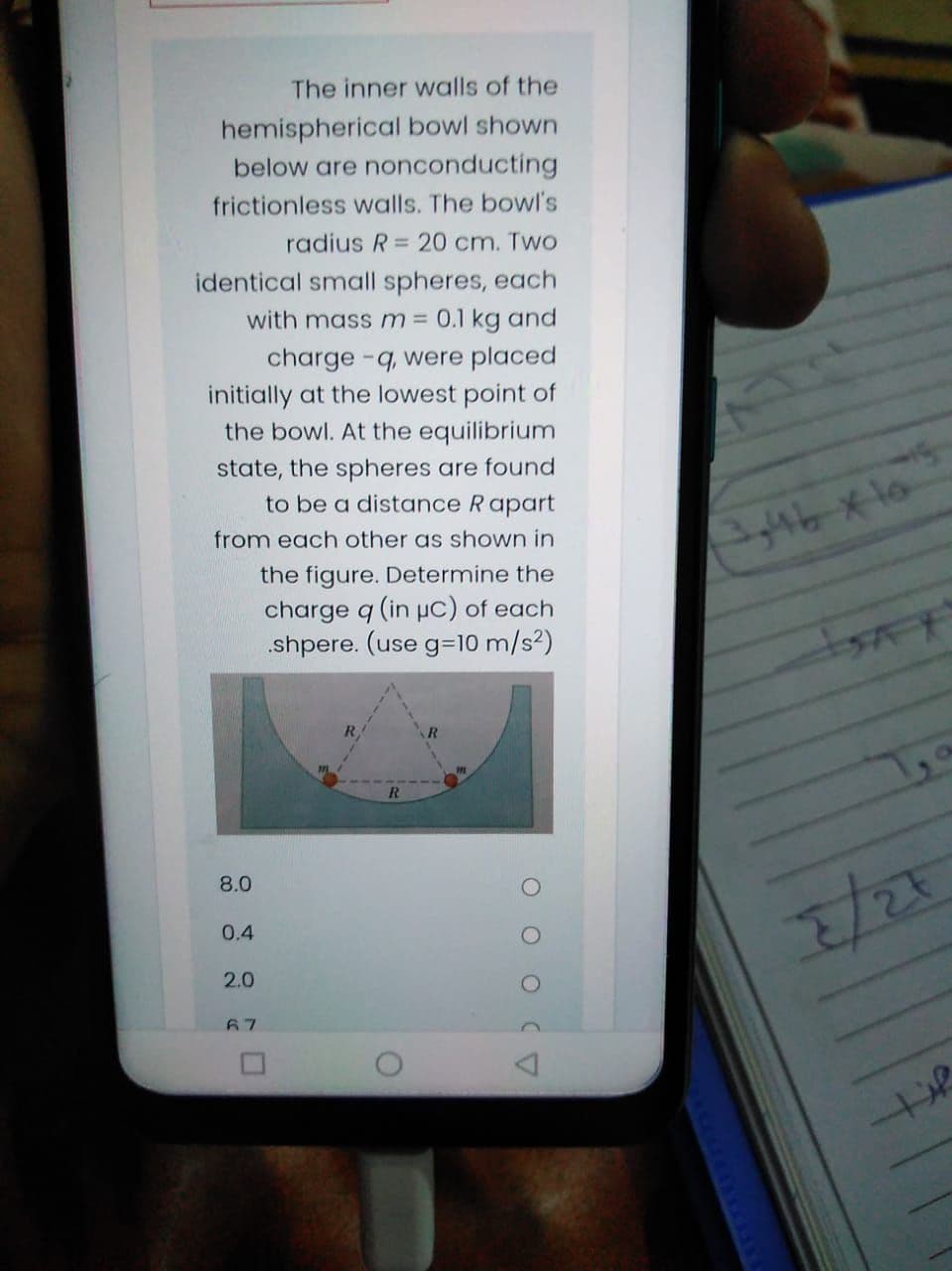The inner walls of the hemispherical bowl shown below are nonconducting frictionless walls. The bowl's radius R = 20 cm. Two identical small spheres, each 0.1 kg and charge -q, were placed initially at the lowest point of the bowl. At the equilibrium with massmD 1. state, the spheres are found to be a distance R apart from each other as shown in the figure. Determine the charge q (in pC) of each .shpere. (use g=10 m/s²) R. 8.0 0.4 2.0 67 O O O C
The inner walls of the hemispherical bowl shown below are nonconducting frictionless walls. The bowl's radius R = 20 cm. Two identical small spheres, each 0.1 kg and charge -q, were placed initially at the lowest point of the bowl. At the equilibrium with massmD 1. state, the spheres are found to be a distance R apart from each other as shown in the figure. Determine the charge q (in pC) of each .shpere. (use g=10 m/s²) R. 8.0 0.4 2.0 67 O O O C
Related questions
Question
I need the answer as soon as possible

Transcribed Image Text:The inner walls of the
hemispherical bowl shown
below are nonconducting
frictionless walls. The bowl's
radius R = 20 cm. Two
identical small spheres, each
with mass m = 0.1 kg and
charge -q, were placed
initially at the lowest point of
the bowl. At the equilibrium
state, the spheres are found
to be a distance Rapart
3,/46x16
from each other as shown in
the figure. Determine the
charge q (in pc) of each
.shpere. (use g=10 m/s?)
R.
8.0
0.4
2.0
67
O O O CV
Expert Solution
This question has been solved!
Explore an expertly crafted, step-by-step solution for a thorough understanding of key concepts.
Step by step
Solved in 2 steps with 2 images
